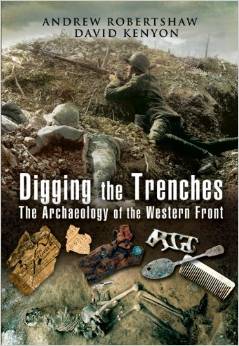With the hundredth anniversary of WW1 looming in the next few weeks the books on the subject are coming in thick and fast, and let them come, I say. It’s a subject I find fascinating and one I believe I’ll never tire from. This is partially due to such a large and vast scope of subject matter and angles to be written about. There are books on soldiers; civilians; guns; tanks; equipment and even animals.
This was World War One, or the Great War as some still prefer. It encompassed and consumed a dozen or so countries and involved dozens more. Millions of men were directly involved, millions never returned home. The casualty figures are simply mind boggling for a conflict that lasted a little over four years; a permanent blemish on the history of mankind.
I’m lucky in so far as I’m a relatively regular visitor to the trenches of the Western Front. I’ve been there on my own, with my family and with friends. I even went once with my school many years ago. The scale of the conflict never ceases to amaze me – the damage and the carnage. Just walking in, say, Ypres in Belgium or on the Somme in France is enough to give you an instant impact and a life changing experience even if you’re only a day visitor ; such is the power of this conflict.
However, that said; If you look geographically at the Western Front it appears like a scar across a face. It’s such a small vein on a living, breathing Earth – a hair line crack, If you like, on a globe full of other hairline cracks! If you walk the ploughed fields of France or Belgium as I do, you know the urge you get to walk head down with eyes scanning the furrows and roadsides as you shuffle from site to site in the hope of finding ‘lost treasure’ usually in the form of a shrapnel ball or bullet casing. Its the fact the rusting artefact in your hand hasn’t seen the light of day for over a hundred years. But what about the bigger picture? What about an archaeological dig of a trench? Well, to be honest I’m surprised that it’s a relatively new idea on the battlefields of WW1.
The trenches, dugouts and block houses are mapped, photographed and documented well enough, so why then the late arrival of digs? Well basically, the affected parts of Europe in question are only just coming to terms with the carnage, it’s as simple as that. We in the UK still mourn and honour the dead but we don’t have the torn and ripped villages and towns raised to the ground by iron rain like the French and Belgians had. Perhaps it’s this that keeps the horror closer to surface. Enter then Digging The Trenchesa fantastic insight into the rediscovery of the Great War’s defences.
The authors, Robertshaw and Kenyon, should need no real introduction and are way beyond qualification for writing such a book. Both are veterans of numerous digs and both are instantly recognisable from their many TV appearances. I’ve had the privilege of meeting Andy Robertshaw on a fair few occasions and his impromptu educational talks on Great War matters amass a sizeable crowd in minutes. His enthusiasm is contagious and his knowledge striking.
The book is well laid out and easily digestible. It’s clear and factual and has a great collection of both colour and black and white photographs. Some are the staple diet of all WW1 books, others quite unique.
It explains in just enough detail about modern archaeological techniques and the use of forensics in modern day research and doesn’t overcook or stew on details that become irrelevant. It’s full of actual digs; some you’ll recognise and will recall reading in the newspapers. Some are silent, lonely and emotional. All are made more poignant by the sad fact that most of the major digs led to the discovery of human remains of some sort or other. Hardly surprising when so many men lived, fought and died in such close proximity to one another.
The stories are told with respect and honour befitting such men and the authors never shy away from the fact that they are now the custodians of young men who have laid undiscovered for over a century. One story I found intriguing was the discovery of a German unteroffizier by the name of Albert Thielecke. His body was discovered where he had been hastily buried and among his possessions were his watch, his harmonica and, amazingly, a prehistoric flint tool!Apparently, when not fighting,Thielecke was a budding archaeologist himself. An amazing and poignant story, I think, given the circumstances of his discovery.
I’ll never walk the fields of the Western Front again without thinking of all those souls lying beneath waiting to be discovered. As I always say, whenever I leave a Commonwealth or German War Graves cemetery and shut the gate silently behind me Good night lads….sleep tight
Review by Phil for War History Online
DIGGING THE TRENCHES
The Archaeology Of The Western Front.
By Andrew Robertshaw and David Kenyon.
Pen & Sword
ISBN 1473822882
